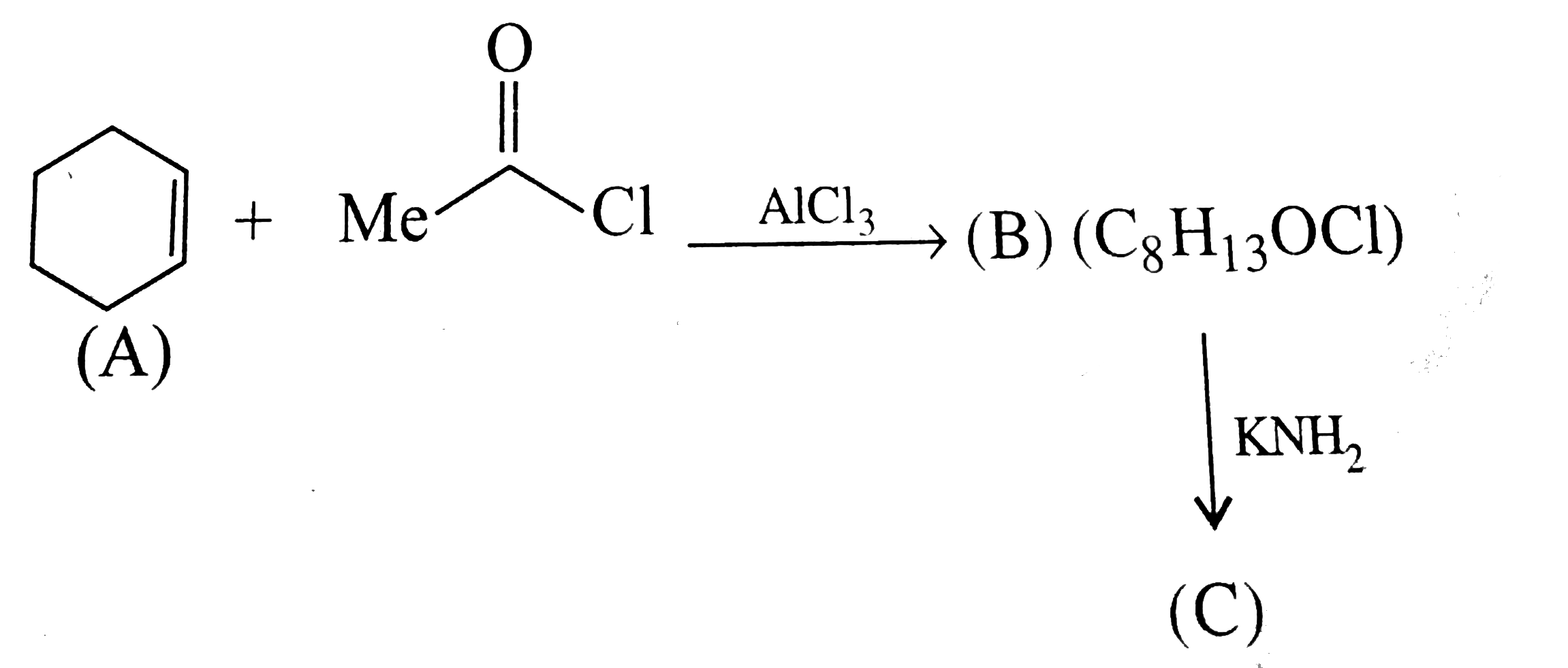
Compound (B) and (C) are :
The correct Answer is:d
Cyclobutane, cyclopentane, and cyclohexane are more stable than cyclopropane and do not undergo catalytic hydrogenation at normal condition of temperature. (H2+Pt) converts (C≡C) to (C−C).
Brich reduction gives anti− addition of H2 and converts (C≡C) to (C=C). So the answer is (d).
Topper's Solved these Questions
- BOOK - CENGAGE CHEMISTRY ENGLISHCHAPTER - ALKENES AND ALKADIENESEXERCISE - Archives(ASSERTION-REASIOING)4videos
ALKENES AND ALKADIENES
- BOOK - CENGAGE CHEMISTRY ENGLISHCHAPTER - ALKENES AND ALKADIENESEXERCISE - Fill in the Blanks3videos
ALKENES AND ALKADIENES
- BOOK - CENGAGE CHEMISTRY ENGLISHCHAPTER - ALKENES AND ALKADIENESEXERCISE - Multiple Correct Answer Type41videos
ALKENES AND ALKADIENES
- BOOK - CENGAGE CHEMISTRY ENGLISHCHAPTER - ALKANES AND CYCLOALKANESEXERCISE - Archives13videos
ALKANES AND CYCLOALKANES
- BOOK - CENGAGE CHEMISTRY ENGLISHCHAPTER - ALKYNESEXERCISE - Exercises (Archives - Analytical and Desriptive Type)4videos
ALKYNES
Similar Questions

Compounds (B) and (C) are:View Solution
Compounds (B) and (C) are :View SolutionR−≡(A)−≡−RLindlar's catalyst+H2−−−−−−−−−−−−→(B)

Compounds (B) and (C) are:View SolutionThe compound (A) in the previous question is further hydrolysed in dilute acidic medium to give compounds (B) and (C). The compounds (B) and (C) are :
View SolutionConsider the following reaction ,
C6H5NH2+CHCl3+KOHΔ−−→(A)H+/H2O−−−−−→(B)+(C)
The compounds (B) and (C) are :-View SolutionThree compounds (A),(B) and (C) are given.

Which statements are correct about (A),(B), and (C) ?View SolutionThe three compounds (A),(B),and (C) on hydrogenation with H2+Pd give (D),(E) and (F), respectively.

Compounds (D),(E) and (F) are :View SolutionThe reaction of H3N3B3Cl3(A) with LiBH4 in tetrahydrofuran gives inorganic benzene (B). Further, the reaction of (A) with (C) leads of H3N3B3(Me)3. Compounds (B) and (C) respectively , are :
View Solution
Compounds (B) and (C) respectively are:View SolutionA+H2O→B+HCl
B+H2O→C+HCl
Compound (A), (B) and (C) will be respectively:View Solution
